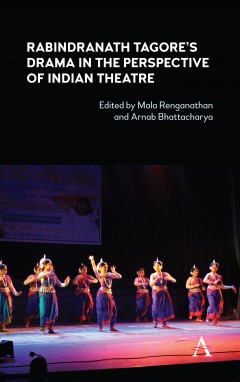Rabindranath Tagore's Drama in the Perspective of Indian Theatre
Edited by Mala Renganathan & Arnab Bhattacharya
Other Formats Available:
E-Book- About This Book
- Reviews
- Author Information
- Series
- Table of Contents
- Links
- Podcasts
About This Book
‘Rabindranath Tagore's Drama in the Perspective of Indian Theatre’ maps Tagore’s place in the Indian dramatic/performance traditions by examining unexplored critical perspectives on his drama such as his texts as performance texts; their exploration in multimedia; reflections of Indian culture in his plays; comparison with playwrights; theatrical links to his world of music and performance genres; his plays in the context of cross-cultural, intercultural theatre; the playwright as a poet-performer-composer and their interconnections; and his drama on the Indian stage.
The book explores both dramatic as well as theatrical traditions in Tagore’s plays by discussing vital issues on Tagore’s drama including gender politics; Tagore’s poetic tradition of dramatic action, time and space; his use of myth humour and satire in the Indian dramatic milieu and discussing Tagore and his contemporaries; modern Indian drama and also the nation and Tagore’s drama. The book also identifies Tagore’s drama of performance art; his stories that inspired many film creations; furthers the view of Tagore’s theatre as the creations of a poet-dramatist, poet-translator, dramatist-producer, actor-singer-choreographer and dramatist-scenographer, all the while not missing the vitality of the dramatist as seen in his intercultural performance/s; his use of environ, mise en scène and the theatrical milieu and last but not the least, the modern productions of Tagore plays.
Reviews
Author Information
Mala Renganathan is Professor and Head, Department of English, North-Eastern Hill University, Shillong, India.
Arnab Bhattacharya is a professional editor, author and translator, and also a guest lecturer in the Department of Comparative Literature, Jadavpur University, Kolkata, India.
Series
Table of Contents
Editors’ Foreword; Section I: The Dramatic Tradition; 1. Rabindranath Tagore: Imagining Nation, Imagining Theatre, Abhijit Sen; 2. Rabindrik-Nritya, Tagore’s New Technique for Indian Dramatic Art: Discourse and Practice, Deepshikha Ghosh; 3. Place and Space in Tagore’s ‘Raktakarabi’ and ‘Muktadhara’, Chandrava Chakravarty; 4. Tagore’s Artistic Rendering of Spiritual Realism in ‘Dak Ghar’, Papiya Lahiri; 5. Tagore and the Indian Tradition of Hasyarasa: A Study in Tagore’s Shorter Humorous Plays, Arnab Bhattacharya; 6. The Comic Genius of Tagore: Interplay of Humour and Reality in ‘Chirakumar Sabha’, Deboshree Bhattacharjee; Section II: Theatre/Performance Tradition; 7. The Unrealized Theatre of Tagore, Dattatreya Dutt; 8. Encounters and Exchanges: An Intercultural Interrogation of Rabindranath Tagore’s Dramaturgy in ‘Muktadhara’, Sarbani Sen Vengadasalam; 9. Performing Chitrangada: From Tagore to Rituparno Ghosh, Debopriya Bannerjee; 10. Visarjan as Performance: A Road towards Ritual Healing, Seetha Vijaykumar; 11. ‘Valmiki Pratibha’ and Its Afterlife, Sharmila Majumdar; 12. Postmodern Subversion and the Aesthetics of Film Adaptation: The Example of ‘Tasher Desh’, Sneha Kar Chaudhuri; Index.
Links
Stay Updated
Information
Latest Tweets



